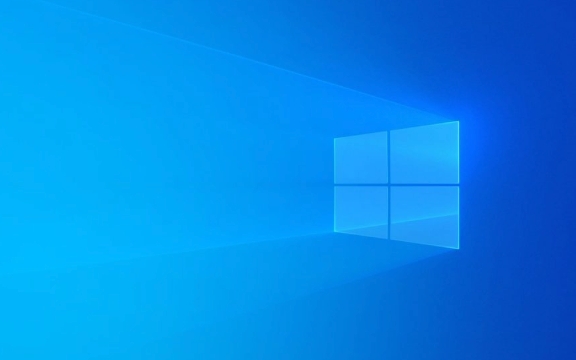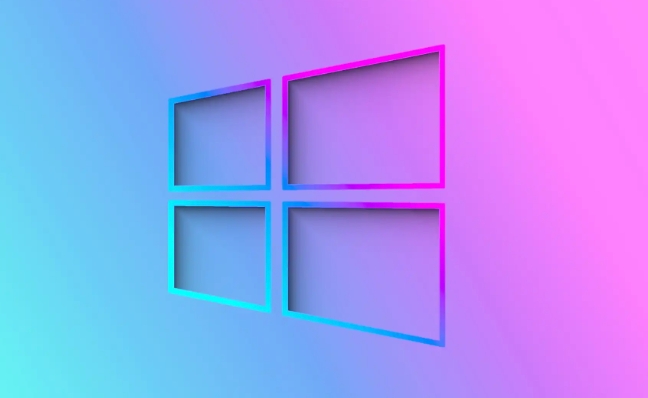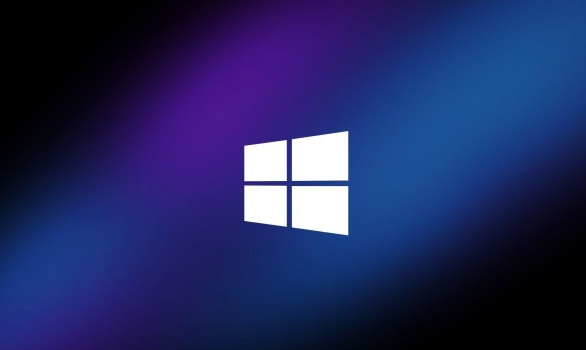How to change network from Public to Private in Windows 10
Aug 02, 2025 am 12:41 AMTo change your Windows 10 network from Public to Private, go to Settings > Network & Internet > Wi-Fi or Ethernet > select your network > set Network profile to Private. 2. Alternatively, use Control Panel > Network and Sharing Center > click your network name > select Private. 3. For advanced users, open PowerShell as Admin, run Get-NetConnectionProfile to find the InterfaceIndex, then use Set-NetConnectionProfile -InterfaceIndex <number> -NetworkCategory Private with the correct index number. This change enables file sharing, network discovery, and device access on trusted networks like home or office, and should only be done on secure networks; options may be grayed out due to Group Policy or metered connection settings.

If your Windows 10 computer shows your network as "Public" and you want to change it to "Private", here’s how to do it — it’s a simple process that helps improve file sharing and device discovery on trusted networks like your home.

Why Change from Public to Private?
When a network is set to Public, Windows treats it as untrusted (like a coffee shop or airport Wi-Fi), so it enables stricter firewall settings and disables network discovery.
When set to Private, Windows assumes you're on a trusted network (like your home or office), enabling features like:
- File and printer sharing
- Network discovery
- Remote access to devices
So if you're at home and want devices to see each other, change the network to Private.

How to Change Network to Private in Windows 10
1. Use Settings (Easiest Method)
This is the most straightforward way:
- Click the Start menu and go to Settings (the gear icon).
- Click Network & Internet.
- If you're on Wi-Fi:
- Click Wi-Fi in the left panel.
- Click the name of the network you're connected to.
- Under Network profile, select Private instead of Public.
If you're on Ethernet:

- Click Ethernet > Choose your connection > Set Network profile to Private.
? Done — your network is now private.
2. Use Control Panel (Alternative)
If you prefer the older interface:
- Open Control Panel (you can search for it in the Start menu).
- Go to Network and Sharing Center.
- Click the name of your active network (e.g., “Home Network” or your Wi-Fi name).
- In the popup window, click Private under "Network".
- Close the window — the change takes effect immediately.
3. Use PowerShell (For Advanced Users)
If the above options don’t work or you want to script it:
Right-click the Start button and select Windows PowerShell (Admin).
-
Type this command to see your current network:
Get-NetConnectionProfile
Note the InterfaceIndex of your network.
Set it to Private using:
Set-NetConnectionProfile -InterfaceIndex <number> -NetworkCategory Private
Replace
<number>with the actual InterfaceIndex.
Example:
Set-NetConnectionProfile -InterfaceIndex 12 -NetworkCategory Private
Notes and Tips
- Windows may automatically set new networks to Public for security.
- You should only set trusted networks (like home or office) to Private.
- If the option is missing or grayed out, it could be due to Group Policy (common in workplaces) or a metered connection setting.
Basically, just go to Settings > Network & Internet > Wi-Fi (or Ethernet) > Network profile, and switch to Private.
It’s not complicated — but it makes a big difference for local network use.
The above is the detailed content of How to change network from Public to Private in Windows 10. For more information, please follow other related articles on the PHP Chinese website!

Hot AI Tools

Undress AI Tool
Undress images for free

Undresser.AI Undress
AI-powered app for creating realistic nude photos

AI Clothes Remover
Online AI tool for removing clothes from photos.

Clothoff.io
AI clothes remover

Video Face Swap
Swap faces in any video effortlessly with our completely free AI face swap tool!

Hot Article

Hot Tools

Notepad++7.3.1
Easy-to-use and free code editor

SublimeText3 Chinese version
Chinese version, very easy to use

Zend Studio 13.0.1
Powerful PHP integrated development environment

Dreamweaver CS6
Visual web development tools

SublimeText3 Mac version
God-level code editing software (SublimeText3)

Hot Topics
 Windows 11 slow boot time fix
Jul 04, 2025 am 02:04 AM
Windows 11 slow boot time fix
Jul 04, 2025 am 02:04 AM
The problem of slow booting can be solved by the following methods: 1. Check and disable unnecessary booting programs; 2. Turn off the quick boot function; 3. Update the driver and check disk health; 4. Adjust the number of processor cores (only for advanced users). For Windows 11 systems, first, the default self-start software such as QQ and WeChat are disabled through the task manager to improve the startup speed; if you use dual systems or old hardware, you can enter the power option to turn off the quick boot function; second, use the device manager to update the driver and run the chkdsk command to fix disk errors, and it is recommended to replace the mechanical hard disk with SSD; for multi-core CPU users, the kernel parameters can be adjusted through bcdedit and msconfig to optimize the startup efficiency. Most cases can be corrected by basic investigation
 How to Change Font Color on Desktop Icons (Windows 11)
Jul 07, 2025 pm 12:07 PM
How to Change Font Color on Desktop Icons (Windows 11)
Jul 07, 2025 pm 12:07 PM
If you're having trouble reading your desktop icons' text or simply want to personalize your desktop look, you may be looking for a way to change the font color on desktop icons in Windows 11. Unfortunately, Windows 11 doesn't offer an easy built-in
 Fixed Windows 11 Google Chrome not opening
Jul 08, 2025 pm 02:36 PM
Fixed Windows 11 Google Chrome not opening
Jul 08, 2025 pm 02:36 PM
Fixed Windows 11 Google Chrome not opening Google Chrome is the most popular browser right now, but even it sometimes requires help to open on Windows. Then follow the on-screen instructions to complete the process. After completing the above steps, launch Google Chrome again to see if it works properly now. 5. Delete Chrome User Profile If you are still having problems, it may be time to delete Chrome User Profile. This will delete all your personal information, so be sure to back up all relevant data. Typically, you delete the Chrome user profile through the browser itself. But given that you can't open it, here's another way: Turn on Windo
 How to fix second monitor not detected in Windows?
Jul 12, 2025 am 02:27 AM
How to fix second monitor not detected in Windows?
Jul 12, 2025 am 02:27 AM
When Windows cannot detect a second monitor, first check whether the physical connection is normal, including power supply, cable plug-in and interface compatibility, and try to replace the cable or adapter; secondly, update or reinstall the graphics card driver through the Device Manager, and roll back the driver version if necessary; then manually click "Detection" in the display settings to identify the monitor to confirm whether it is correctly identified by the system; finally check whether the monitor input source is switched to the corresponding interface, and confirm whether the graphics card output port connected to the cable is correct. Following the above steps to check in turn, most dual-screen recognition problems can usually be solved.
 Fixed the failure to upload files in Windows Google Chrome
Jul 08, 2025 pm 02:33 PM
Fixed the failure to upload files in Windows Google Chrome
Jul 08, 2025 pm 02:33 PM
Have problems uploading files in Google Chrome? This may be annoying, right? Whether you are attaching documents to emails, sharing images on social media, or submitting important files for work or school, a smooth file upload process is crucial. So, it can be frustrating if your file uploads continue to fail in Chrome on Windows PC. If you're not ready to give up your favorite browser, here are some tips for fixes that can't upload files on Windows Google Chrome 1. Start with Universal Repair Before we learn about any advanced troubleshooting tips, it's best to try some of the basic solutions mentioned below. Troubleshooting Internet connection issues: Internet connection
 Want to Build an Everyday Work Desktop? Get a Mini PC Instead
Jul 08, 2025 am 06:03 AM
Want to Build an Everyday Work Desktop? Get a Mini PC Instead
Jul 08, 2025 am 06:03 AM
Mini PCs have undergone
 How to get a free Windows 11 product key?
Jul 03, 2025 am 12:51 AM
How to get a free Windows 11 product key?
Jul 03, 2025 am 12:51 AM
You can use it temporarily by upgrading genuine Win10, using the education plan or not activating temporary use. Specifically, it includes: 1. Free upgrade from activated Windows 10 to Windows 11; 2. Students or specific organization members obtain authorization through the Microsoft Education Program; 3. Short-term tests can be used directly without activation, but their functions are limited; 4. Beware of free online key traps, and it is recommended to purchase authorization or confirm upgrade conditions through formal channels.







